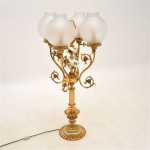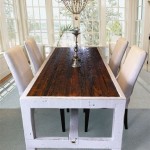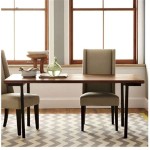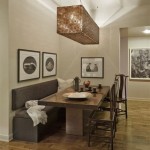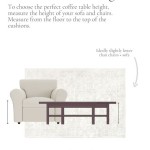```html
Contemporary Living Room Side Tables: Functionality and Style
Contemporary living room side tables are more than just convenient surfaces; they are integral components of modern interior design. They offer practical solutions for storage and display while simultaneously contributing to the overall aesthetic appeal of a living space. The design, material, and placement of a side table can significantly influence the room's ambiance, reflecting individual styles and complementing existing furniture pieces.
The evolution of side table design mirrors the broader trends in contemporary furniture. Minimalism, functionality, and the use of diverse materials characterize the current market. Gone are the days of solely relying on traditional wood or ornate carvings. Contemporary side tables embrace clean lines, geometric shapes, and a blend of materials such as metal, glass, stone, and acrylic. This versatility allows them to integrate seamlessly into various interior design schemes, from ultra-modern to transitional.
Key Point 1: Material Diversity in Contemporary Side Tables
The selection of materials available for contemporary side tables is exceptionally diverse, offering a range of aesthetic and functional properties. Each material brings a unique character to the piece and influences its durability, maintenance requirements, and overall visual impact.
Wood remains a popular choice, but its application in contemporary design often deviates from traditional styles. Instead of heavily carved or stained pieces, contemporary wooden side tables feature clean, simple lines and natural finishes. Light-colored woods like birch, maple, and ash are frequently used to create a sense of airiness and complement minimalist interiors. Darker woods, such as walnut or teak, can add warmth and sophistication, particularly in spaces with neutral color palettes. Reclaimed wood is also gaining popularity, offering an eco-friendly and rustic-chic aesthetic.
Metal is another prevalent material, often used in conjunction with other elements like wood or glass. Stainless steel, powder-coated steel, and brass are common choices. Metal frames provide structural stability and visual contrast, adding a touch of industrial or modern flair. The sleek, minimalist aesthetic of metal side tables makes them suitable for contemporary apartments and urban living spaces. Brass accents can also introduce a touch of luxury and elegance.
Glass, particularly tempered glass, is frequently employed for table tops, creating a light and airy feel. Glass side tables are ideal for smaller living rooms as they allow light to pass through, making the space appear larger and more open. The transparency of glass complements various design styles and allows the underlying structure, whether it's a metal frame or a sculptural base, to be highlighted. Clear glass offers a minimalist aesthetic, while tinted or frosted glass can add a subtle touch of color and privacy.
Stone, such as marble, granite, or concrete, offers a luxurious and durable option for side tables. Marble provides a timeless elegance with its unique veining patterns, while granite offers a more robust and textured surface. Concrete side tables, often used in industrial-inspired interiors, possess a raw and minimalist aesthetic. Stone side tables are typically heavier than other options, providing stability and a sense of grounding in the room.
Acrylic and other synthetic materials are also utilized, offering a wide range of colors and shapes. Acrylic side tables are lightweight, durable, and easy to clean. They can be molded into various forms, allowing for creative and sculptural designs. These materials are often used in modern and eclectic interiors, adding a playful and contemporary touch.
Key Point 2: Functionality and Versatility in Design
Contemporary side tables are designed not only for aesthetic appeal but also for optimal functionality and versatility. Their purpose extends beyond simply providing a surface for placing objects. Modern designs incorporate features such as storage compartments, adjustable heights, and nesting capabilities to enhance their practicality in living spaces.
Storage is a key consideration in contemporary side table design. Many models include drawers, shelves, or hidden compartments to accommodate books, magazines, remote controls, or other frequently used items. This helps to keep the living room clutter-free and organized. Side tables with storage are particularly useful in smaller apartments or homes where space is limited. The storage compartments are often designed to be discreet, maintaining the clean and minimalist aesthetic.
Adjustable height is another feature that enhances the versatility of contemporary side tables. Tables with adjustable heights can be adapted to various purposes, such as a laptop stand, a dining surface, or a reading table. This flexibility makes them suitable for multi-functional living rooms where the same space is used for different activities throughout the day. The adjustable mechanism is usually designed to be user-friendly and seamlessly integrated into the overall design.
Nesting side tables are a practical solution for maximizing space in living rooms. These tables consist of two or more tables of different sizes that can be nested together when not in use. This allows them to be easily stored away, freeing up floor space when needed. When entertaining guests or require additional surfaces, the nesting tables can be pulled out and arranged as needed. Nesting side tables are particularly useful in smaller apartments or homes with limited space.
Some contemporary side tables incorporate integrated lighting, providing both ambient and task lighting. These tables often feature built-in LED lights or USB charging ports, offering added convenience. Integrated lighting can create a cozy and inviting atmosphere in the living room, while USB ports allow for convenient charging of electronic devices.
Beyond these specific features, the shape and size of the side table also contribute to its functionality. Round side tables are often preferred for their soft and organic feel, while square or rectangular tables offer a more structured and geometric aesthetic. The size of the table should be proportional to the surrounding furniture and the overall size of the room. Small side tables are suitable for smaller spaces, while larger tables can make a statement in larger living rooms.
Key Point 3: Placement and Integration into Living Room Design
The placement of a side table within the living room is crucial for both functionality and aesthetics. Strategic placement can enhance the flow of the room, balance the composition of the furniture arrangement, and improve the overall usability of the space. The choice of side table should complement the existing furniture and décor to create a cohesive and harmonious living room design.
One common placement strategy is to position side tables next to sofas or armchairs. This provides a convenient surface for placing drinks, books, or remote controls within easy reach. The height of the side table should be approximately the same as the armrest of the sofa or chair, allowing for comfortable access. When placing a side table next to a seating area, consider the direction of traffic flow to ensure it does not obstruct movement.
Another common placement is to use side tables as bedside tables in dual-purpose living rooms. If a sofa bed is used or the living room doubles as a guest room, side tables can provide a practical and stylish alternative to traditional bedside tables. These tables can offer storage for books, lamps, and other essentials, creating a comfortable and functional sleeping area.
Side tables can also be used to fill empty corners or awkward spaces in the living room. A strategically placed side table can add visual interest and balance to the room. Consider using a taller side table with a decorative lamp or plant to draw the eye upward and create a focal point in the corner. Alternatively, a small, round side table can soften the corners of a room and create a more inviting atmosphere.
The color and style of the side table should complement the existing décor in the living room. Consider the color palette of the room and choose a side table in a complementary or contrasting color to add visual interest. The style of the side table should also align with the overall design aesthetic of the room, whether it's modern, minimalist, eclectic, or traditional. Mixing and matching styles can create an interesting and unique look, but it's important to maintain a sense of cohesion and balance.
The surface of the side table can be used to display decorative objects, such as vases, sculptures, or framed photos. These items can add personality and character to the living room, reflecting individual tastes and interests. Arrange decorative objects in a balanced and visually appealing way, considering the size, shape, and color of each item. Avoid overcrowding the surface, allowing each object to stand out and contribute to the overall aesthetic.
Ultimately, the placement and integration of contemporary side tables into the living room design should be guided by both functionality and aesthetics. By carefully considering the material, design, and placement of side tables, individuals can create a living space that is both stylish and practical, reflecting their personal style and enhancing their daily lives.
```
Modern Side Tables End West Elm

Homcom Modern Coffee Table Round Center With Black Metal Frame For Living Room White Aosom Com

Modern End Side Tables

Reeve Mid Century Side Table 28 West Elm

Contemporary Designer Over Sofa Side Table Made To Order

Modern Round Small Chair Side Table End For Living Room Faux Marble Homary

Side Table Decor Ideas To Make Your Home Look Amazing

A Modern Living Room With Classic Appeal Furniture By Caffe Latte Home

40 End Table Decor Ideas To Elevate Your Space With Style

Modern End Side Tables


